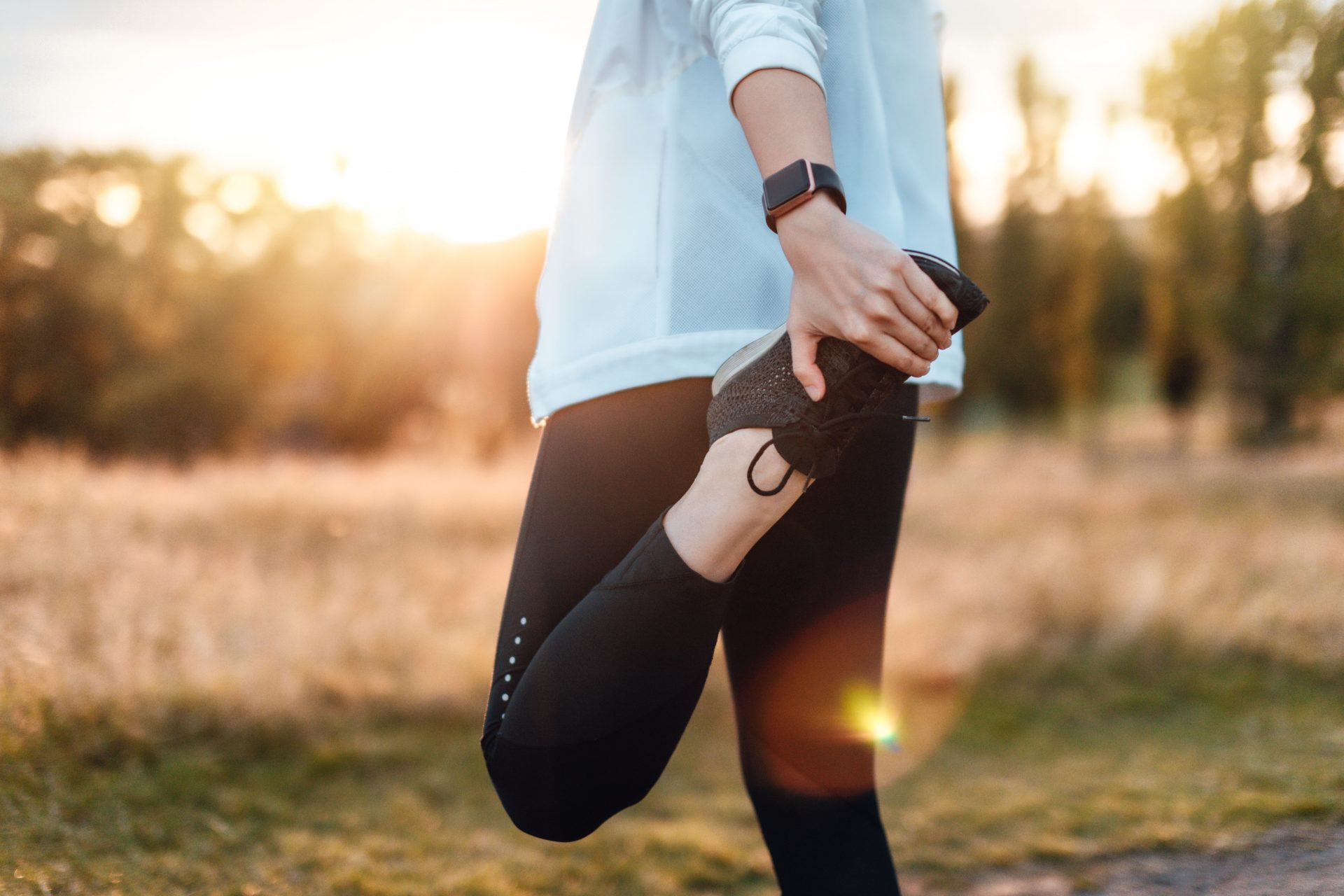Suffering with regular DOMS? Making running part of your active recovery could help.
When your muscles are really sore from working out, walking up and down the stairs or even getting out of bed can be a struggle. You might therefore be surprised to find out that moving is one of the best ways to relieve your DOMS (delayed onset muscle soreness) and may even reduce the intensity of future occurences. Low-impact exercises like swimming and cycling are often recommended to reduce muscle soreness. But can running help repair your muscles post-workout?
The reason we get DOMS after working out is because our muscles are trying to repair themselves after going through some minor tears during exercise. This might sound scary or even dangerous, but Tim Kayode – a physiotherapist and the founder of the London clinic Myoset – explains that DOMs are actually a good thing. “If you have DOMS, it means that you have exercised your muscles heavily and it means that you’ve had an effective workout,” he says. The pain you’re feeling is your muscles repairing themselves, which is what allows them to grow.
You may also like
How to run: why you should include recovery runs into your training
If you don’t do anything to manage your muscle soreness, it will take longer for it to go away or it could even get worse (according to Kayode, your DOMS will be at its worst two days post-workout). To deal with it head on, Kayode recommends active recovery. “An active recovery session will help move blood to your muscles, which boosts circulation and reduces a build-up of lactic acid, which is part of what causes soreness,” he says.
Kayode explains that rest doesn’t necessarily mean to sit or lie down. The best kind of rest activates your muscles without putting too much strain on them.
Active recovery usually entails doing some low-intensity training, which will stop your DOMS from lasting so long and speed up the recovery process in future. This is because an active recovery boosts circulation, which sends more oxygen and nutrient-rich blood to your sore muscles, and prepares them to repair quicker in the future, so you can get back to your regular workouts with less rest.
Although Kayode recommends avoiding very difficult runs when you have DOMS, a light jog or any run that is at a lower intensity than your usual workouts could actually be very helpful for your muscle soreness as part of an active recovery process.

Try to run at a lower intensity than normal by lowering your distance and also trying to lower your speed. “If it usually takes you five minutes to run a kilometre, time yourself so you’re running a kilometre per seven minutes instead,” he suggests.
You should also opt to run on a softer surface than usual, like grass or sand, because any work that is too high impact could risk making your DOMS worse by damaging your muscles or creating new areas of soreness.
You may also like
DOMS after walking: why does hiking make your muscles so sore?
It’s even more important to warm up properly for your run when you have DOMS, according to Kayode. “Spend more time doing some dynamic stretches and focus in particular on stretching the areas that are sore,” he suggests.
It’s important to stretch after your active recovery run too and Kayode also recommends upping your water intake by about 0.5-1 litres afterwards to keep hydrated. This will help to boost circulation and ensure your body is not lacking electrolytes, which could make your soreness worse, as electrolytes are key to muscle recovery. You should also focus on eating foods that are high in protein to aid your active recovery.
For more tips on moving well and healthy recipes to support your fitness regime, check out the Strong Women Training Club.
Images: Getty
Source: Read Full Article
